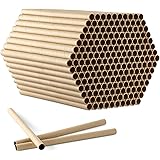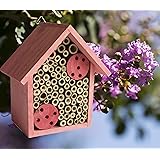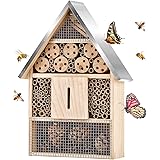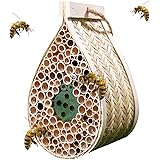When the temperatures begin to drop and summer is coming to a close, many insects will go inactive while waiting for spring to return. Some, such as the Monarch Butterfly, will fly south to warmer climates. However, other pests like the Ladybug will huddle up in cracks and crevices to stay warm for the winter months. This method of group hibernation, called diapause, can last up to nine months. It allows ladybugs to regulate their body temperature and survive off the energy stored in their bodies.
As a result, they can eat aphids all day and are considered garden and farm helpers in the process. In fact, the spotted beetles have been so helpful to farmers that the name “ladybug” was actually a reference to the Virgin Mary by European farmers who prayed for her help when crops were being destroyed by pests. In addition to being beneficial to gardens and farms, ladybugs also make great pets for kids because they don’t bite or sting.
During the fall, when the weather turns cold, ladybugs will seek a place to stay warm and secluded to spend the winter. They can swarm near homes and other structures and can even make their way inside the walls. These insects are not trying to infest your house; they just want a safe place to stay warm for the winter.
You will usually see a lot of ladybugs in winter around houses with a sunny southern or southwest exposure. These beetles are especially attracted to light-colored surfaces, such as the siding of a home or doors and windows. They also tend to congregate near other small openings, such as the spaces behind shutters and gutters. If the weather becomes warm again, ladybugs will rouse themselves and look for a safe place to hide until the next time the temperatures dip again.
The most common ladybugs you will see this fall are the multicolored Asian Lady Beetles (Harmonia axyridis), which are not native to the United States. They were brought to the country in the 1960s and quickly spread, mainly because they consume aphids, which destroy plants.
If you do notice ladybugs swarming near your home, you can take steps to keep them out of the house. Make sure doors have proper weather stripping and that windows have tight-fitting screens, advises Terminix. Caulking any potential openings will also help to deter the beetles.
If you do need to get rid of the beetles, a good option is to vacuum them. Just be careful not to crush them because they may liquefy and stain the walls of your home. Alternatively, you can spray the ladybugs with a mild insecticide. This should only be used as a last resort, though, because the chemicals can be harmful to you and the environment. Usually, you will see more beneficial beetles around the house in the spring when they are ready to swarm again to continue their work protecting your garden and crops.









